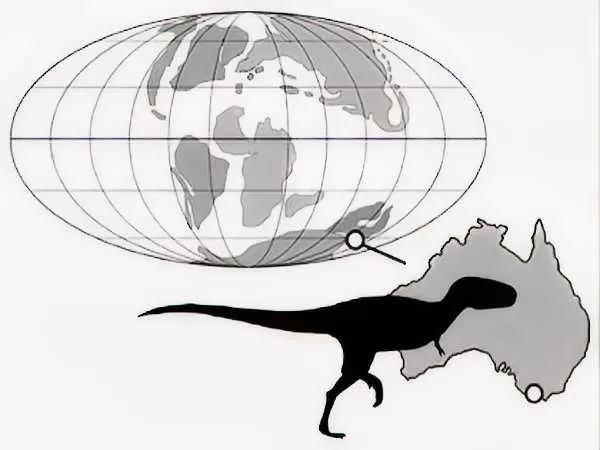Paleontologists have unveiled a groundbreaking discovery: first fossil evidleence indicating that T. Rex’s predecessors roamed the entire globe. A foot-long pelvic bone, discovered in Australia, sheds light on the widespread presence of these ancient carnivores.
A Significant Discovery in Paleontology
Discovery, reported in the prestigious journal Science, dates back 110 million years. The fossil pubis is “almost identical to those of tyrannosaurids,” according to the study led by Roger Benson of the United Kingdom’s University of Cambridge. This crucial bone, which plays an key role in the balance and structure of the distinctive carnivore, provides compelling evidence that “advanced tyrannosaurids” thrived tens of millions of years before the iconic T. Rex evolved around 85 million years ago.
Characteristics of Early Tyrannosaurids
These early tyrannosaurids, like their famous descendant, were likely characterized by long legs, small arms, and robust skulls. The newly discovered fossil also reveals a connection to the smaller, more agile Raptorex dinosaur carnivores from even earlier eras. This suggests a lineage of predatory dinosaurs that were well-adapted to their environments and capable of evolving over millions of years into the formidable giants like T. Rex.
The Global Reach of Tyrannosaurids
The implications of this find are significant. “The find is intriguing and certainly suggests tyrannosaurids flourished worldwide,” says paleontologist Thomas Holtz of the University of Maryland in College Park, who was not part of the study. However, Holtz emphasizes the need for more than just one bone to confirm the global distribution of T. Rex’s predecessors.
The Fossil’s Journey
The fossil was discovered in a remote region of Australia, an area not traditionally associated with tyrannosaurid fossils. Its discovery was the result of a collaborative effort involving local researchers and international experts. The bone was meticulously excavated, preserved, and analyzed, revealing its remarkable similarity to the pubis bones of known tyrannosaurids.
The Importance of the Pubis Bone
The pubis bone is a vital part of the dinosaur’s anatomy. It supports the abdominal muscles and helps maintain balance, which is essential for the bipedal stance of tyrannosaurids. This specific bone’s structure provides critical insights into the locomotion and hunting strategies of these ancient predators.
Advanced Tyrannosaurids Before T. Rex
The study suggests that advanced tyrannosaurids existed long before T. Rex became the apex predator of its time. These earlier tyrannosaurids were smaller but shared many characteristics with their larger descendants. This evolutionary lineage highlights the adaptability and success of tyrannosaurids in various environments across the globe.
Paleontological Implications
This discovery opens new avenues for paleontological research. It challenges the existing understanding of tyrannosaurid distribution and suggests a more complex evolutionary history. Researchers will now look for additional fossils in other parts of the world to further support these findings and provide a clearer picture of tyrannosaurid evolution.
Future Research Directions
Paleontologists are keen to continue exploring regions outside the traditional fossil sites in North America and Asia. discovery in Australia underscores the potential for significant finds in underexplored areas. Future expeditions will aim to uncover more fossils that can help piece together the global distribution and evolutionary history of tyrannosaurids.
Conclusion
The unveiling of this 110-million-year-old pelvic bone marks a significant milestone in the study of dinosaur evolution. It provides the first fossil evidence that T. Rex’s predecessors roamed the entire globe, challenging previous assumptions and opening new paths for research. As paleontologists continue to explore and analyze new fossil sites, our understanding of these magnificent creatures and their history will undoubtedly grow.
This discovery not only highlights the global presence of tyrannosaurids but also emphasizes the importance of international collaboration in advancing scientific knowledge. As researchers delve deeper into the past, they bring us closer to understanding the rich and diverse history of life on Earth.
Highlights in this post: T. Rex ancestors, tyrannosaurids, dinosaur fossil, global distribution, Roger Benson, University of Cambridge, dinosaur discovery.

